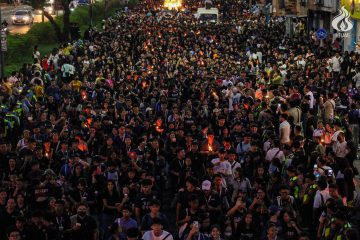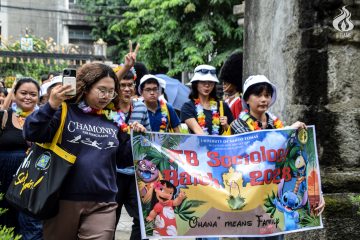by JOHANNA LEELAN GEE

ART AND literature will always be significant in portraying the stories of women. It was the effort of innovative artists to revolutionize the feminist art movement which inspired new generations to introspect about the socio-political status of women.
Among the possible ways to depict the conditions of women is through comics. Comics is a medium wherein simplified drawings are gradually transformed into artistic and beautiful illustrations combined with a storyline that resounds with the cultural awareness of artists and readers.
Penlab, a Filipino comic digital platform, was introduced in September 2020.
It was founded by the creative content group Kalabaw Kolektib. It is a non-profit exclusive platform for Filipino comics where artists can publish their works for free. Readers need only good access to the internet to find good Filipino comics.
A possible general impression of comics is that they have an unworldly illustration of the physique. An example is the manga of Eiichiro Oda’s One Piece, which illustrates the female bodies in an exaggerated manner. Women’s waists are too thin and they often wear skimpy clothes to highlight their hourglass bodies.
Men and women alike have the ideal body proportions where the former is drawn as tall and muscular while the latter is illustrated as delicate slim figures. The costume of the famous Filipino superhero may not be drawn in the same way, yet her red bikini or shorts outfit is sexy. Darna is an iconic symbol of female power but there are setbacks in indulging the male audience.
Carolyn Cocca’s “The ‘Broke Back Test:’ A quantitative and qualitative analysis of portrayals of women in mainstream superhero comics, 1993-2013” analyzed women’s portrayal in Marvel and DC comics which revealed the vast differences between the two genders.
Cocca observes that males are drawn based on muscularity, but the females are usually illustrated as having huge breasts, small waists, and long legs. Spanning three decades, women are historically objectified in comic books. It is obviously a design solely for a male-centric audience.
Albert Louis Raqueño, a visual communication student from the University of the Philippines, admitted the portrayal by some comics of the body of women and some men is unrealistic.
“Aesthetically speaking, the costumes have tendencies to be sexualized […] it’s worse for women because all throughout the years there is the depiction, sexualization, the male gaze of the patriarch. They are the people in power, and they are in control.” Raqueño told The Flame.
But unlike mangas and webtoons, the illustrations of female characters in Filipino comics are not hypersexualized.
Randy Valiente, one of the renowned Filipino comic book artists and writers, agreed with these observations, saying Filipino comics are heavily influenced by the Americans and not the Japanese.
“Our comics are for the general public. Our portrayal of women is not exaggerated. Our portrayal of women is realistic.” Valiente told The Flame.
Women in Penlab Comics
As one browses the comics published in Penlab, one will be stunned to see the boundless creativity that komikeras and komikeros possess. Aside from fantasy, action, and romance genres that dominated the app, there is also a fair amount of horror stories that are derived from Filipino superstitious beliefs. The emerging stories in Penlab often featured women protagonists and queer stories that further diversify all genders.
Here are three graphic novels that uniquely portrayed female characters through their beautiful illustrations and artistic mindset:
Honbarian by Olivecoat
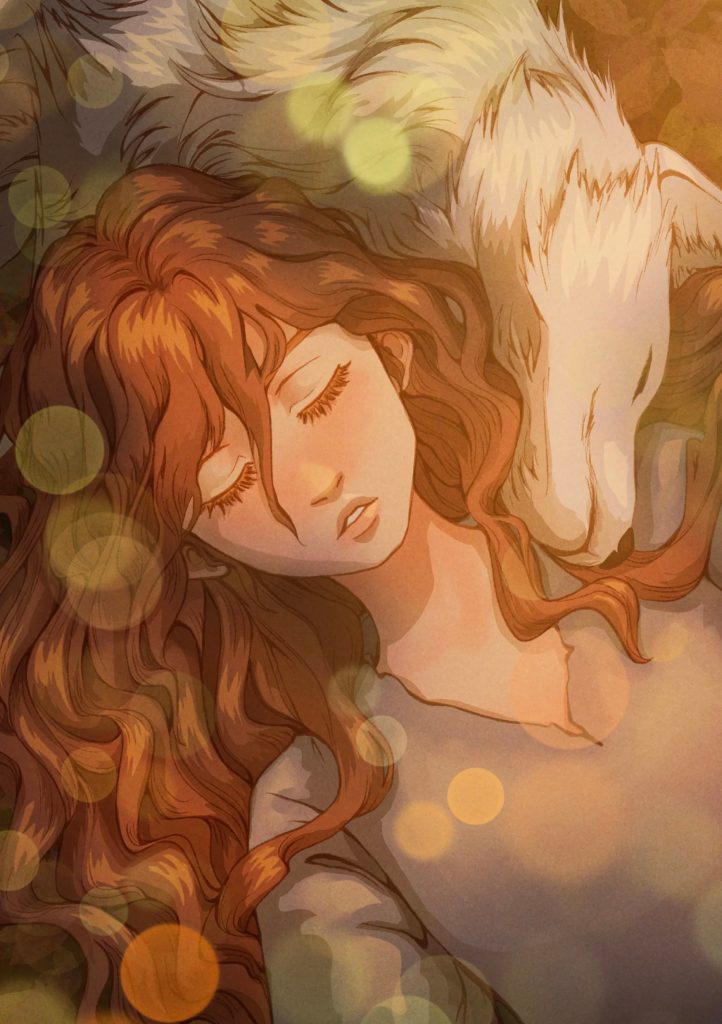
Honbarian is a story with a perfect blend of historical, thriller, mystery, and fantasy with a pleasing art style. Olivecoat’s illustrations are simplistic in design; its usage of color tone in its illustrations can be likened to a fairytale.
Honbarian were the invaders across the sea and was feared due to their ruthless nature of mass killings. In the first few chapters, Andrea, also called Andy, may come across as a passive character. She was a bit bewildered due to her amnesia, yet with a little clue and information about her identity, she escaped the war that destroyed her homeland and walked across the wild lands for weeks. Only dressed in rugs, and with a wolf pup as her companion, she persevered through the storms.
Perhaps because it is historical, misogyny exists in the story. Andy, a woman, was seen as strange due to her ability to read. Women who were part of the upper society may learn to read, but common women remained uneducated.
Despite the prejudice of some characters against her, Andy did not give much attention to it for all she wanted to know was the truth about her identity, and whether there was still a family she can come back to. Truly, a woman of strength displayed through perseverance.
Raqueño noted that although comics are fictional, they are still based on real events. Forms of artistic expression are products of the past and women in comics can be seen as a reflection of the past, present, and future.
“Historically speaking, the experience of women is very repressed,” Raqueño said.
La Vida Loca by Rominia Basabasa
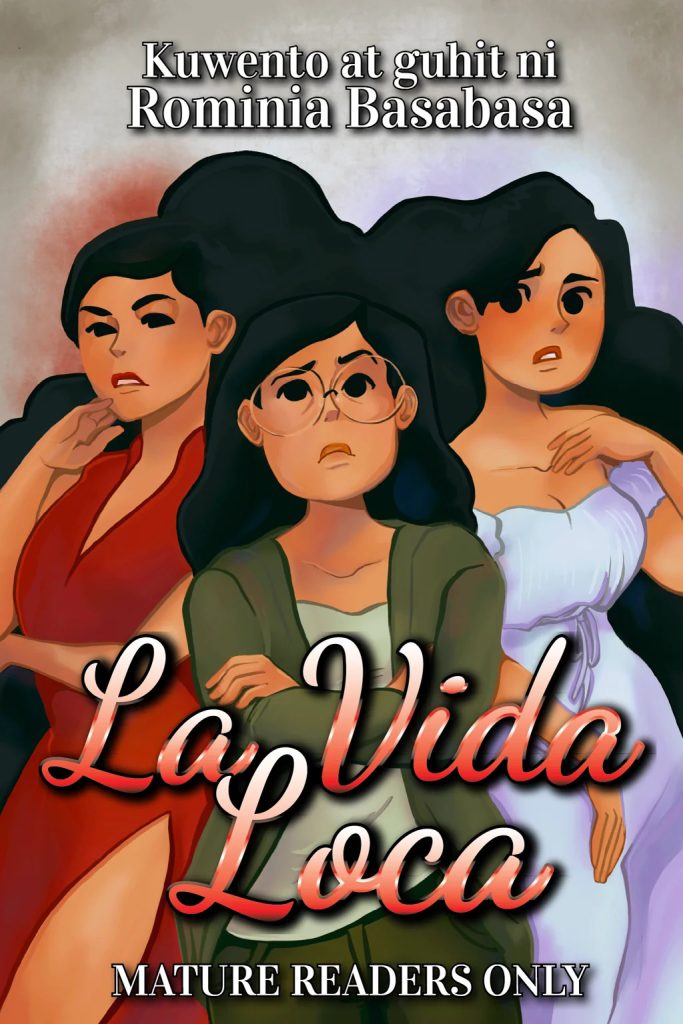
La Vida Loca, which meant “The Crazy Life” in English, is about Vida Sta. Cruz who grew up in a Catholic household. Vida develops two contrasting personalities after being hurt and betrayed by her lover.
The short comic discusses aspects of femininity and the struggles that come from it. In five chapters, Romania Basabasa portrayed the dangers of being a Madonna, a woman tied to virtue, innocence, and purity.
The chapters are illustrated in black and white. It has a soft touch that is not similar to usual comics with sharp lines. This slice-of-life comic presents the development of an innocent woman raised in a Catholic household, who later transformed into an entirely different person.
Vida envisioned her first love as dreamy, but was shattered when her lover played in someone else’s sheets. She was hurt and coped in destructive ways, afraid to love again.
This sharp change made Vida develop two contrasting personalities namely Virginia and Jezebel. The former is the stereotype of Madonna while the latter is a contra vida [whore]. When the Madonna whispered to stay with him, the contra vida would say ghost him. The storyline is ordinary yet it argues that in a conservative household, a woman who grew up naive about love and sex can be easily fooled, even manipulated by men.
Valiente claimed that the difference between Filipino comics and American comics is that the former do not illustrate superheroes often. Perhaps, “Darna” by Mars Ravelo is an exception and remains to be the most popular superhero comics in Philippine history.
“Our comics are centered on drama, fantasy, romance, horror […] and because of that, our portrayal of women’s stories highlights true Filipinas,” Valiente said.
Overall, this comic seems to say: be smart and cautious, ladies!
Nagmamahal, Maria Clara by Marianie
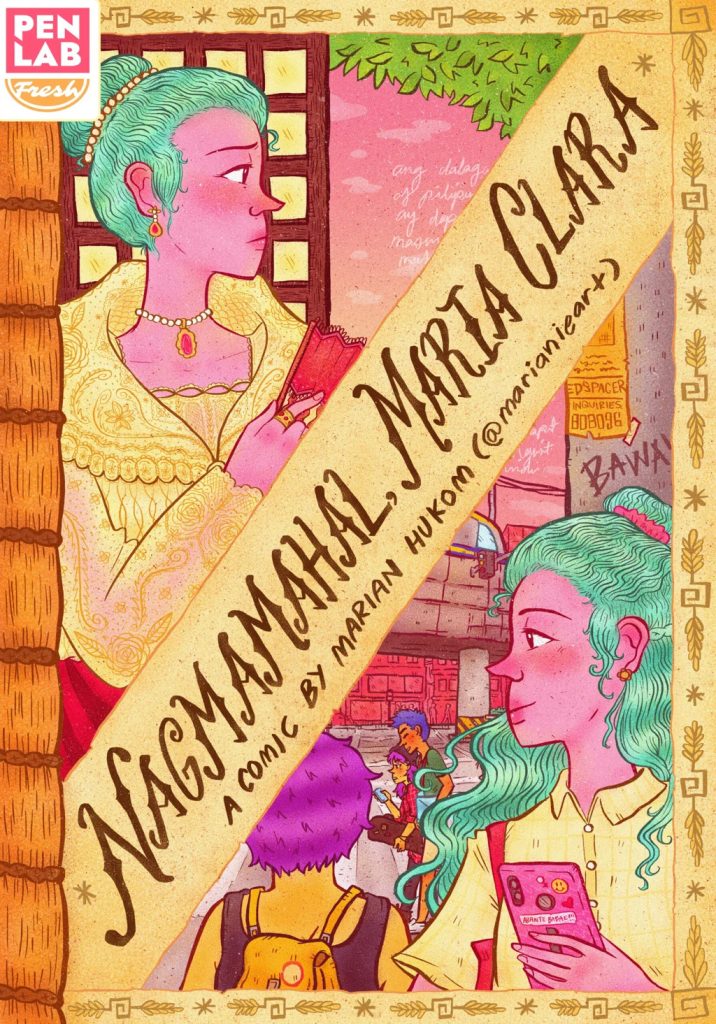
If you liked the GMA’s history-themed drama series “Maria Clara at Ibarra,” you might also love this comic with the same time-travel concept but narrated in reverse.
Maria Clara is a story about a woman who lived in the 1880s and traveled in the present day. Coming from a conservative society, she experienced culture shock seeing women wearing revealing clothes and working side-by-side with men.
The art style is sublime with an anime-like style in black and white. The background looked like a photograph, which highlighted the characters more.
The comic debunked the notion that Maria Clara should be the paragon of a Filipina, as the character now has a negative association with being a woman. They are no longer wired into following the image of being obedient, silent, and passive; the chains that oppressed women loosened due to people who strived for women’s rights and gender equality.
It is indeed a refreshing read whose storyline and visual aesthetics helped in tackling women’s issues. As Maria Clara tries to discover a woman’s role in society, readers could also imagine how society viewed women in the past and reflect the leaps of changes throughout the years.
In comics, one can take aesthetic pleasure from the illustrations and storyline by the artist while finding deeper meanings behind the pages. After all, art and literature hone readers to broaden how we perceive the world.
To this day, there are a lot of stories made by women and are for women. And they are no longer silenced, thanks to artistic expression, which has become an avenue for change. F

